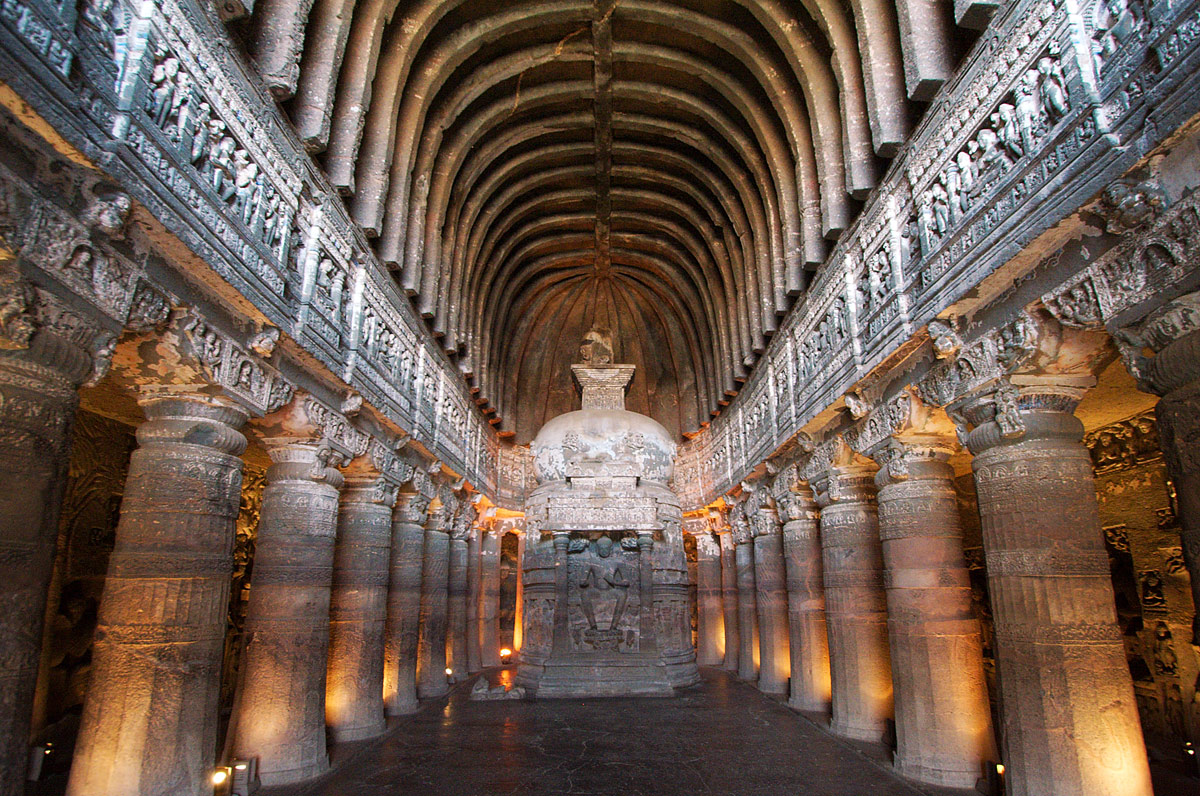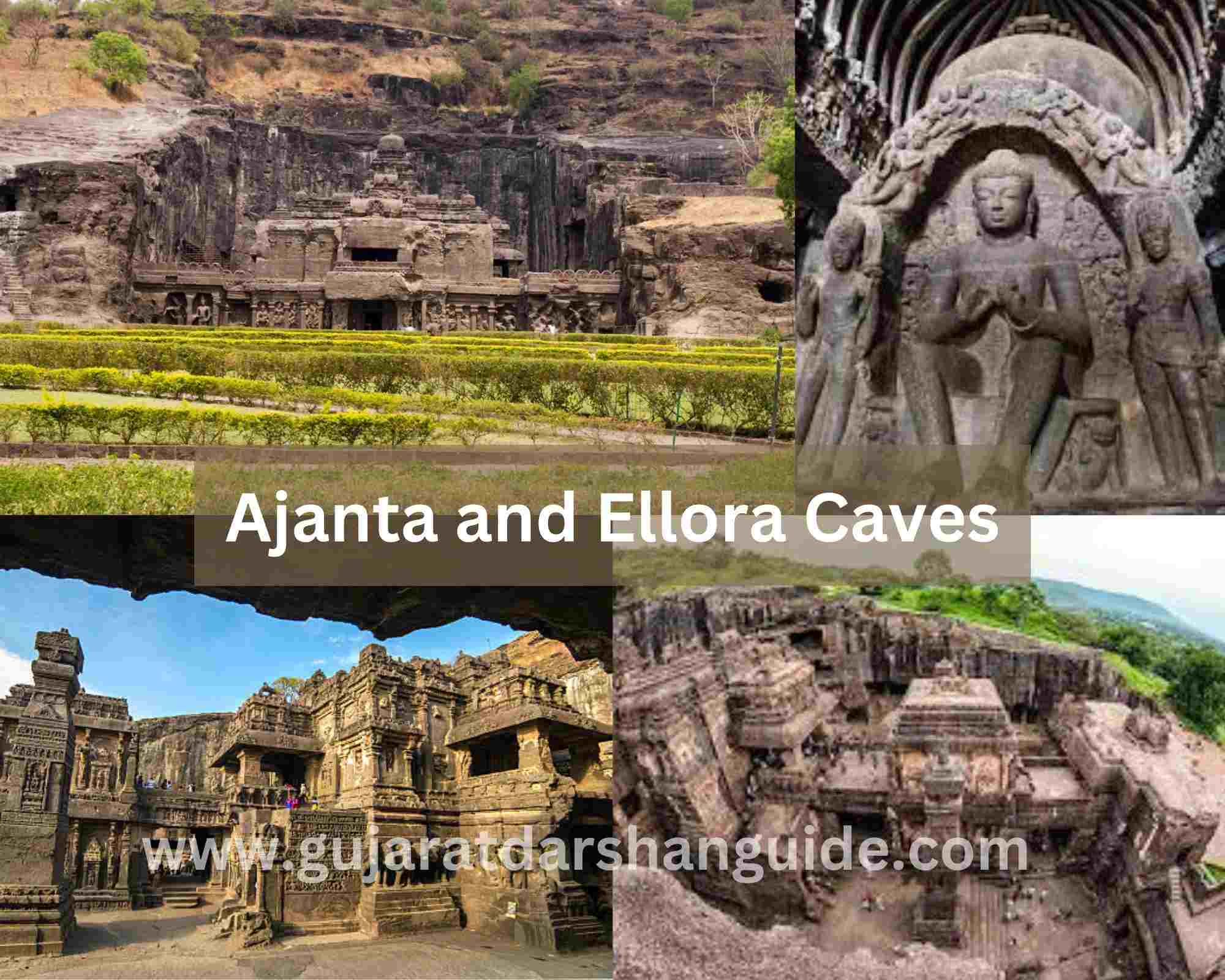Aurangabad: The Gateway to Ajanta and Ellora Caves
Aurangabad is the perfect starting point for any visit to Ajanta and Ellora Caves. As the nearest major city to both the world heritage sites, Aurangabad has excellent railway and air connectivity. The Chhatrapati Shivaji Maharaj International Airport in Aurangabad is well-connected to major Indian cities. The Aurangabad railway station is also a junction station, providing efficient train services within Maharashtra and to other parts of India. From Aurangabad, Ajanta Caves are around 100km away while Ellora Caves are just 30km away. Both the archaeological sites can be easily accessed by comfortable state-run or private buses from Aurangabad. Having explored one of the sites in a day, you can head to the other site on the second day of your trip from Aurangabad. Well-maintained roads and frequent transport options ensure hassle-free travel. Aurangabad thus proves to be the perfect base to explore the UNESCO World Heritage Sites of Ajanta and Ellora Caves.
A Glimpse into Ajanta Caves: Architectural Marvels from the 2nd Century BCE
The Ajanta Caves are numbered 30 rock-cut cave monuments that are carved into a semicircular cliff face. Construction of these Buddhist monastic complexes began in the 2nd century BCE and continued until around the 6th century CE. Cave 10, known as the ‘Chaitya-griha’ or prayer hall cave, is considered the oldest among them. What makes Ajanta Caves truly special are the exquisite frescoes and paintings that adorn its interiors and date back to the late Gupta period around the 5th century CE. Depicting myriad scenes from the life of Buddha and Jataka tales, these works of art remain unparalleled examples of ancient Indian painting styles like Ajanta Style. Among the most famous paintings are those from Cave 1’s porch or Cave 17’s ‘Buddha’s Life’ depictions. Spending hours taking in these intact colorful frescoes is an experience worth your time.
Exploring the Finely-Carved Caves
Beyond the artistic brilliance, studying Ajanta Caves’ rock-cut architecture also offers insights into ancient Indian engineering. Take your time exploring each numbered chaitya (prayer hall) and vihara (monastery) intricately carved from basalt rock face using only hand-held tools. Let the skill of the artisans in fashioning rock pillars, bed designs, arched gates and stupas sink in as you wander through these UNESCO-protected marvels.

Ellora Caves: Where Three Faiths Coexist in Architectural Splendor
While Ajanta Caves showed the zenith of Buddhist rock-cut architecture, Ellora Caves reveal the syncretism of Hinduism, Buddhism and Jainism across 30 rock-cut monuments erected between the 6th to 10th centuries CE. These were excavated from Charanandri hills, just 34km from Aurangabad. The most impressive among Ellora’s monuments is Cave 16, better known as the Kailasa Temple. Carved entirely from a single rock face, it uniquely represents Shaivism (Shiva worship) in a multi-storey architectural style. Spread across an area double that of Parthenon, this *Rathas or temple-within-a-fortress is counted among the largest monolithic structures globally.
Discovering Sacred Structures Across Three Faiths
Taking days to explore Ellora’s sprawling precincts, you get to experience the influences each religion had on rock-cut cave architecture. From elaborate Jain Tirthankara sculptures in Caves 8-10 to the earliest Buddhist structural viharas and chaityas in Caves 12-14, your journey culminates in the Kailasa Temple’s awe-inspiring multiplicity of shikhara towers, mandapas and sculptures. Witnessing how three faiths coexisted within a single landmass is sure to leave you with perspectives to last lifetimes.
Delving into the Artistic Nuances of Ajanta and Ellora
The detailed artworks of Ajanta and Ellora remain unparalleled specimens from ancient India. Give them the attention they deserve by evaluating the techniques and styles employed: At Ajanta, focus on frescoes within Cave 1’s arched porch or Cave 17’s narrative scenes. Observe how floral motifs, body proportions and drapery textures were mastered through pigment-based Ajanta style. Admire how colors retain vibrancy despite two millennia of exposure. Ellora showcases sculptural brilliance across shrines. Compare relief styles - from intricate carvings within Dashavtar Temple to Kailasa’s stately deities. Note precision achieved despite working with granite, diorite and basalt. Identify influences like Gandhara school in depictions. Reading up on iconographic details, evolving artistic trends and possible artists will enrich your experience manifold. Make the most of exclusive guided tours or audio guides that uncover nuances beyond sight.
Tips for an Impactful Visit to Ajanta and Ellora
- At minimum, dedicate 2 full days for Ajanta and 3 for Ellora to do justice.
- Carry comfortable shoes,sun protection, mosquito repellent and water given outdoor settings.
- Visit just after monsoon or in winters for pleasant weather and fewer crowds.
- Opt for sunrise/sunset visits to experience aesthetic rock hues and lesser footfall.
- Hire official ASI guides (available at ticket counters) for history and religious context.
- Use mobile torchlight inside caves but avoid flash photography to protect frescoes.
- Don’t forget to support local craftspeople, eateries to aid heritage conservation.
- Save Aurangabad for exploration on your travel days between the caves.
By planning well and using tips like these, you can treasure lifelong impressions from Ajanta and Ellora - among humanity’s finest architectural gifts. The effort pays off tenfold at these masterworks of ancient Indian artistry. Do experience their magic at least once in your lifetime!

 The Complex Debate Around Animal Ethics
The Complex Debate Around Animal Ethics